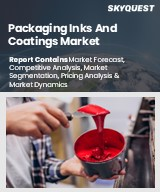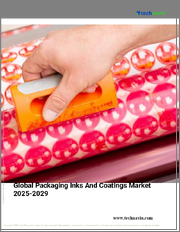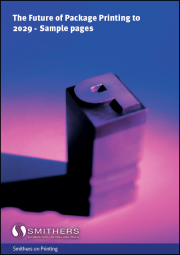
|
시장보고서
상품코드
1758695
포장용 잉크 및 코팅 시장 규모, 점유율, 성장 분석, 유형별, 기술별, 용도별, 지역별 - 산업 예측(2025-2032년)Packaging Inks and Coatings Market Size, Share, and Growth Analysis, By Type (Flexible Plastic, Rigid Plastic), By Technology (Water-Based Inks, Solvent-Based Inks), By Application, By Region - Industry Forecast 2025-2032 |
||||||
포장용 잉크 및 코팅 세계 시장 규모는 2023년에 72억 달러, 2024년 76억 1,000만 달러에서 2032년까지는 118억 6,000만 달러로 성장하고, 예측 기간(2025년-2032년) CAGR은 5.7%를 보일 전망입니다.
세계 포장용 잉크 및 코팅제 시장은 식음료, 헬스케어, 전자상거래 등 주요 산업의 지속가능성에 대한 요구로 인해 빠르게 발전하고 있습니다. 강화된 규제와 높아진 소비자 인식으로 인해 저 VOC, 바이오, 재활용 가능한 제형에 대한 수요가 증가하고 있으며, 지속가능성은 R&D 투자와 업계 협업의 핵심 초점이 되고 있습니다. 디지털 인쇄 기술은 맞춤형 및 주문형 솔루션의 기회를 제공하고, UV 및 전자빔 경화형 잉크는 속도와 에너지 효율성 측면에서 발전하고 있으며, 전자상거래 붐으로 인해 보존성과 브랜드 차별화를 위한 아름답고 내구성이 뛰어난 코팅에 대한 요구가 증가하고 있습니다. 요구가 증가하고 있습니다. 또한, 기능성 코팅의 부상과 전략적 인수합병이 결합되어 경쟁 구도가 재편되고 지속 가능한 디지털 혁신에 대한 중요성이 강조되고 있습니다.
목차
서론
- 조사 목적
- 조사 범위
- 정의
조사 방법
- 정보 조달
- 2차와 1차 데이터 방법
- 시장 규모 예측
- 시장 전제조건과 제한
주요 요약
- 세계 시장 전망
- 공급과 수요 동향 분석
- 부문별 기회 분석
시장 역학과 전망
- 시장 개요
- 시장 규모
- 시장 역학
- 성장 촉진요인과 기회
- 성장 억제요인과 과제
- Porter의 Five Forces 분석
주요 시장 인사이트
- 주요 성공 요인
- 경쟁 정도
- 주요 투자 기회
- 시장 생태계
- 시장의 매력 지수(2024년)
- PESTEL 분석
- 거시경제 지표
- 밸류체인 분석
- 가격 분석
- 사례 연구
- 고객 구매 행동 분석
포장용 잉크 및 코팅 시장 규모 : 유형별·CAGR(2025년-2032년)
- 시장 개요
- 연질 플라스틱
- 경질 플라스틱
- 금속
- 종이
포장용 잉크 및 코팅 시장 규모 : 기술별·CAGR(2025년-2032년)
- 시장 개요
- 수성 잉크
- 용제계 잉크
- UV 경화 잉크
- 전자선 경화형 잉크
- 기타 기술
포장용 잉크 및 코팅 시장 규모 : 용도별·CAGR(2025년-2032년)
- 시장 개요
- 광고
- 전자
- 소매
- 기타
포장용 잉크 및 코팅 시장 규모·CAGR(2025년-2032년)
- 북미
- 미국
- 캐나다
- 유럽
- 독일
- 스페인
- 프랑스
- 영국
- 이탈리아
- 기타 유럽
- 아시아태평양
- 중국
- 인도
- 일본
- 한국
- 기타 아시아태평양
- 라틴아메리카
- 브라질
- 기타 라틴아메리카
- 중동 및 아프리카
- GCC 국가
- 남아프리카
- 기타 중동 및 아프리카
경쟁 정보
- 주요 5개사 비교
- 주요 기업의 시장 포지셔닝(2024년)
- 주요 시장 기업이 채택한 전략
- 최근 시장 동향
- 기업의 시장 점유율 분석(2024년)
- 주요 기업 개요
- 기업 상세
- 제품 포트폴리오 분석
- 기업 부문별 점유율 분석
- 매출 전년대비 비교(2022년-2024년)
주요 기업 개요
- AkzoNobel N.V.
- PPG Industries Inc.
- Spring Coating Systems
- Sun Chemical Corporation
- Siegwerk Druckfarben AG & Co. KGaA
- ALTANA
- Brancher
- Arkema
- CROMOS TINTAS GRAFICAS
- Environmental Inks and Coatings
- Nippon Paint
- Toyo Ink
- Sakata
결론과 제안
LSH 25.07.04Global Packaging Inks And Coatings Market size was valued at USD 7.2 billion in 2023 and is poised to grow from USD 7.61 billion in 2024 to USD 11.86 billion by 2032, growing at a CAGR of 5.7% during the forecast period (2025-2032).
The global packaging inks and coatings market is rapidly evolving, driven primarily by sustainability demands across key industries, including food and beverage, healthcare, and e-commerce. Stricter regulations and heightened consumer awareness are fueling the demand for low-VOC, bio-based, and recyclable formulations, making sustainability a pivotal focus for R&D investments and industry collaborations. Digital printing technologies are gaining traction, offering opportunities for customization and on-demand solutions, while UV and electron-beam curable inks are advancing in terms of speed and energy efficiency. The e-commerce boom has increased the need for visually appealing yet durable coatings that enhance shelf life and brand differentiation. Additionally, the rise of functional coatings, coupled with strategic mergers and acquisitions, is reshaping the competitive landscape, emphasizing sustainable and digital innovations.
Top-down and bottom-up approaches were used to estimate and validate the size of the Global Packaging Inks And Coatings market and to estimate the size of various other dependent submarkets. The research methodology used to estimate the market size includes the following details: The key players in the market were identified through secondary research, and their market shares in the respective regions were determined through primary and secondary research. This entire procedure includes the study of the annual and financial reports of the top market players and extensive interviews for key insights from industry leaders such as CEOs, VPs, directors, and marketing executives. All percentage shares split, and breakdowns were determined using secondary sources and verified through Primary sources. All possible parameters that affect the markets covered in this research study have been accounted for, viewed in extensive detail, verified through primary research, and analyzed to get the final quantitative and qualitative data.
Global Packaging Inks And Coatings Market Segments Analysis
Global Packaging Inks And Coatings Market is segmented by Type, Technology, Application and region. Based on Type, the market is segmented into Flexible Plastic, Rigid Plastic, Metal and Paper. Based on Technology, the market is segmented into Water-Based Inks, Solvent-Based Inks, UV-Curable Inks, Electron Beam-Curable Inks and Other Technologies. Based on Application, the market is segmented into Advertising, Electronic, Retail and Other. Based on region, the market is segmented into North America, Europe, Asia Pacific, Latin America and Middle East & Africa.
Driver of the Global Packaging Inks And Coatings Market
The Global Packaging Inks and Coatings market is experiencing significant growth due to heightened environmental regulations and a growing consumer preference for sustainable packaging solutions. This shift is prompting manufacturers and brand owners to innovate by developing low-VOC, bio-based, and recyclable inks and coatings. Companies are facing increasing pressure to minimize their carbon footprints and adhere to stringent air quality and waste management standards. As a result, there is a strong focus on research and development of water-borne systems, UV/EB curable options, and biodegradable formulations. This trend is fostering the widespread adoption of environmentally friendly chemistries throughout the supply chain, thereby enhancing corporate sustainability efforts.
Restraints in the Global Packaging Inks And Coatings Market
The Global Packaging Inks and Coatings market faces significant restraints due to the volatility in prices of petrochemical-based resins, pigments, and specialty additives. Sudden increases in crude oil prices, along with disruptions in supply caused by geopolitical tensions or natural disasters, can drastically affect the profit margins of ink and coating manufacturers. As a result, converters often find themselves burdened with higher production costs, which may either have to be absorbed or transferred to customers. This unpredictability not only complicates strategic long-term planning but also discourages investments in innovative formulation technologies within the industry.
Market Trends of the Global Packaging Inks And Coatings Market
The Global Packaging Inks and Coatings market is witnessing a significant shift toward functional and barrier coatings, driven by increasing consumer demand for sustainable and performance-oriented solutions. As businesses prioritize plastic reduction and adhere to stringent food safety regulations, there is a growing adoption of multifunctional coatings that enhance packaging integrity while facilitating recyclability. These advanced coatings provide essential properties such as oxygen, moisture, and grease barriers, allowing for the development of recyclable mono-material structures that can replace traditional multi-layer films. This trend supports the industry's transition towards circularity, particularly in sectors dealing with food, pharmaceuticals, and perishable goods, thereby reshaping market dynamics and driving innovation.
Table of Contents
Introduction
- Objectives of the Study
- Scope of the Report
- Definitions
Research Methodology
- Information Procurement
- Secondary & Primary Data Methods
- Market Size Estimation
- Market Assumptions & Limitations
Executive Summary
- Global Market Outlook
- Supply & Demand Trend Analysis
- Segmental Opportunity Analysis
Market Dynamics & Outlook
- Market Overview
- Market Size
- Market Dynamics
- Drivers & Opportunities
- Restraints & Challenges
- Porters Analysis
- Competitive rivalry
- Threat of substitute
- Bargaining power of buyers
- Threat of new entrants
- Bargaining power of suppliers
Key Market Insights
- Key Success Factors
- Degree of Competition
- Top Investment Pockets
- Market Ecosystem
- Market Attractiveness Index, 2024
- PESTEL Analysis
- Macro-Economic Indicators
- Value Chain Analysis
- Pricing Analysis
- Case Studies
- Customer Buying Behavior Analysis
Global Packaging Inks And Coatings Market Size by Type & CAGR (2025-2032)
- Market Overview
- Flexible Plastic
- Rigid Plastic
- Metal
- Paper
Global Packaging Inks And Coatings Market Size by Technology & CAGR (2025-2032)
- Market Overview
- Water-Based Inks
- Solvent-Based Inks
- UV-Curable Inks
- Electron Beam-Curable Inks
- Other Technologies
Global Packaging Inks And Coatings Market Size by Application & CAGR (2025-2032)
- Market Overview
- Advertising
- Electronic
- Retail
- Other
Global Packaging Inks And Coatings Market Size & CAGR (2025-2032)
- North America (Type, Technology, Application)
- US
- Canada
- Europe (Type, Technology, Application)
- Germany
- Spain
- France
- UK
- Italy
- Rest of Europe
- Asia Pacific (Type, Technology, Application)
- China
- India
- Japan
- South Korea
- Rest of Asia-Pacific
- Latin America (Type, Technology, Application)
- Brazil
- Rest of Latin America
- Middle East & Africa (Type, Technology, Application)
- GCC Countries
- South Africa
- Rest of Middle East & Africa
Competitive Intelligence
- Top 5 Player Comparison
- Market Positioning of Key Players, 2024
- Strategies Adopted by Key Market Players
- Recent Developments in the Market
- Company Market Share Analysis, 2024
- Company Profiles of All Key Players
- Company Details
- Product Portfolio Analysis
- Company's Segmental Share Analysis
- Revenue Y-O-Y Comparison (2022-2024)
Key Company Profiles
- AkzoNobel N.V.
- Company Overview
- Business Segment Overview
- Financial Updates
- Key Developments
- PPG Industries Inc.
- Company Overview
- Business Segment Overview
- Financial Updates
- Key Developments
- Spring Coating Systems
- Company Overview
- Business Segment Overview
- Financial Updates
- Key Developments
- Sun Chemical Corporation
- Company Overview
- Business Segment Overview
- Financial Updates
- Key Developments
- Siegwerk Druckfarben AG & Co. KGaA
- Company Overview
- Business Segment Overview
- Financial Updates
- Key Developments
- ALTANA
- Company Overview
- Business Segment Overview
- Financial Updates
- Key Developments
- Brancher
- Company Overview
- Business Segment Overview
- Financial Updates
- Key Developments
- Arkema
- Company Overview
- Business Segment Overview
- Financial Updates
- Key Developments
- CROMOS TINTAS GRAFICAS
- Company Overview
- Business Segment Overview
- Financial Updates
- Key Developments
- Environmental Inks and Coatings
- Company Overview
- Business Segment Overview
- Financial Updates
- Key Developments
- Nippon Paint
- Company Overview
- Business Segment Overview
- Financial Updates
- Key Developments
- Toyo Ink
- Company Overview
- Business Segment Overview
- Financial Updates
- Key Developments
- Sakata
- Company Overview
- Business Segment Overview
- Financial Updates
- Key Developments



















